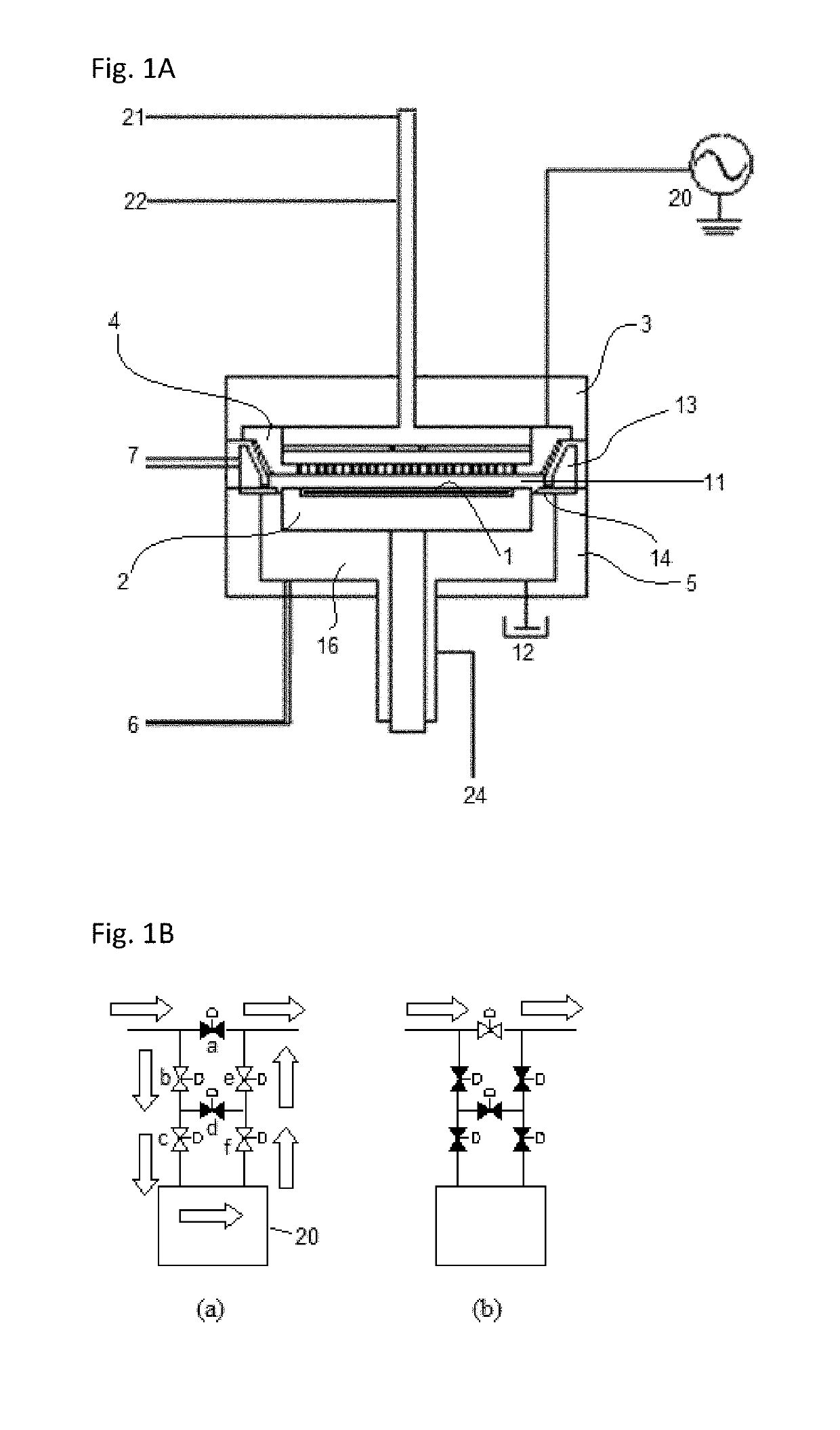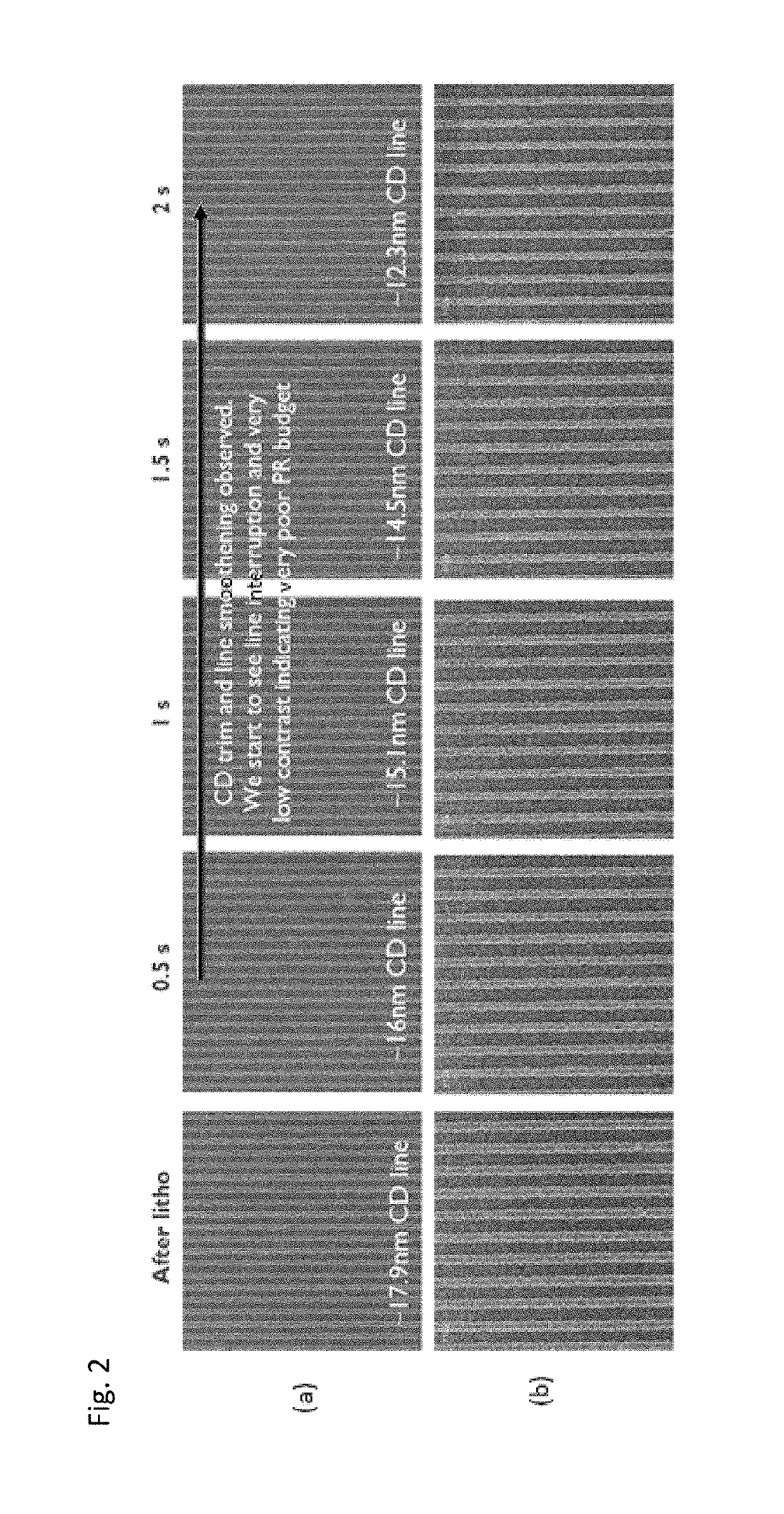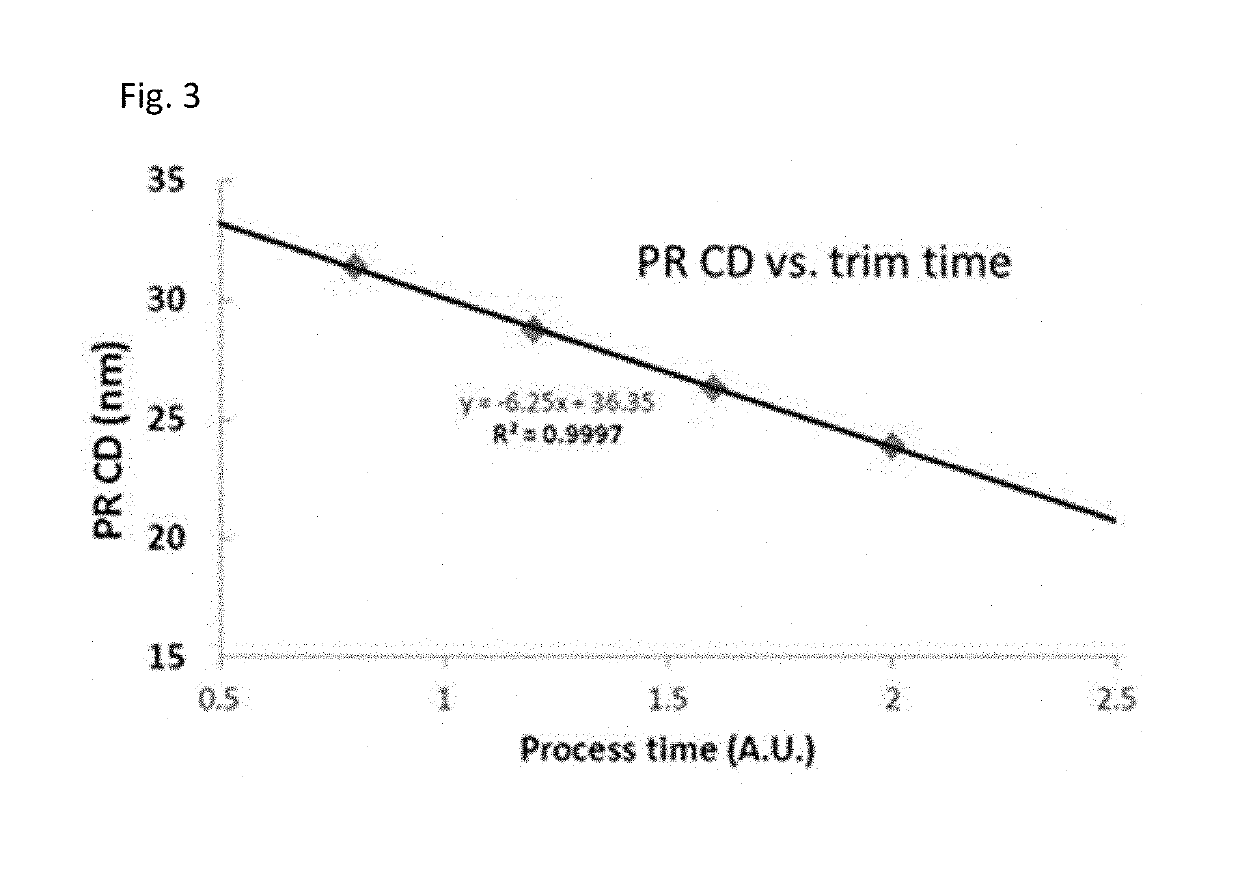Method of spacer-defined direct patterning in semiconductor fabrication
a technology of direct patterning and semiconductors, applied in photomechanical treatment, instruments, electrical equipment, etc., can solve the problems of line-to-line short circuit, the limit of miniaturization by sddp, and the surface roughness of approximately 5 nm, so as to reduce the variability of microfabrication
- Summary
- Abstract
- Description
- Claims
- Application Information
AI Technical Summary
Benefits of technology
Problems solved by technology
Method used
Image
Examples
example 1
[0072]A photoresist pattern (constituted by e.g., Novolacs designed for EUV lithography) formed on a SiOC layer of a 300-mm substrate and having an initial CD of about 35 nm was subjected to trimming using a PEALD apparatus illustrated in FIG. 1A under conditions shown in Table 4 below.
TABLE 4(numbers are approximate)Conditions for trimmingResist materialEUV resistTemperature75°C.Pressure200PaEtchantO2Etchant flow1SLMRF power for a 300-mm wafer30WDurationVaried (see FIG. 2)Trimming rate in width direction1.4nm / secTrimming rate in height direction2nm / sec
[0073]FIG. 3 is a graph showing the relationship between CD of the photoresist (“PR CD”) and process times of trimming (“Process time”). It is confirmed that CD of the photoresist was reduced linearly as a function of process time of trimming at least to the degree that CD was as low as about 20 nm.
example 2
[0074]Even though EUV lithography has higher exposure accuracy than ArF laser, it is difficult to reduce the CD (Critical Dimension) of a resist pattern to the degree which is as low as 12 nm or lower. In this example, a photoresist was subjected to trimming in a manner substantially similar to that in Example 1 except that the initial CD of the photoresist was about 17.9 nm. FIG. 2 shows SEM photographs of patterned surfaces after EUV lithography without trimming (“After litho”), after 0.5 seconds of trimming (“0.5 s”), after 1.0 seconds of trimming (“1 s”), after 1.5 seconds of trimming (“1.5 s”), and after 2.0 seconds of trimming (“2 s”), wherein the lower photos (b) are taken at a higher magnification than that for the upper photos (a).
[0075]As can be seen in FIG. 2, as trimming of the resist pattern progressed, the CD of the resist pattern was reduced from about 17.9 nm (without trimming), about 16 nm (0.5 sec. of trimming), about 15.1 nm (1 sec. of trimming), about 14.5 nm (1....
example 3
[0076]In this example, a photoresist (ArF resist with an initial CD of about 7.90 nm (mean)) was subjected to trimming in a manner similar to that in Example 1 under the conditions shown in Table 5 below.
TABLE 5(numbers are approximate)Conditions for trimmingResist materialArF resistTemperature75°C.Pressure200PaEtchantO2Etchant flow2SLMRF power for a 300-mm wafer30WDuration13.2secondsTrimming rate in width direction0.93nm / secTrimming rate in height directionNot measured
[0077]The trimmed resist pattern was then subjected to SiO2 deposition by PEALD which was conducted under the conditions shown in Table 6 below.
TABLE 6(numbers are approximate)Conditions for PEALDSubstrate temperature75°C.Electrode gap (a thickness of a substrate is10mmabout 0.7 mm)Pressure500PaPrecursorBDEASCarrier gas / Dilution gasArFlow rate of carrier gas (continuous)1000sccmFlow rate of dilution gas (continuous)1000sccmFlow rate of precursorCorresponding to the flowrate of carrier gasRF power (13.56 MHz) for a 300...
PUM
 Login to View More
Login to View More Abstract
Description
Claims
Application Information
 Login to View More
Login to View More - R&D
- Intellectual Property
- Life Sciences
- Materials
- Tech Scout
- Unparalleled Data Quality
- Higher Quality Content
- 60% Fewer Hallucinations
Browse by: Latest US Patents, China's latest patents, Technical Efficacy Thesaurus, Application Domain, Technology Topic, Popular Technical Reports.
© 2025 PatSnap. All rights reserved.Legal|Privacy policy|Modern Slavery Act Transparency Statement|Sitemap|About US| Contact US: help@patsnap.com



